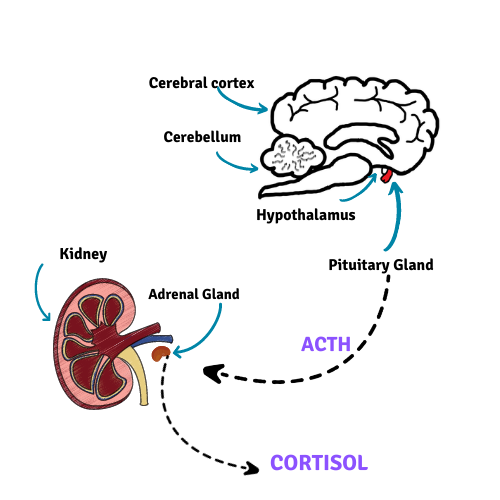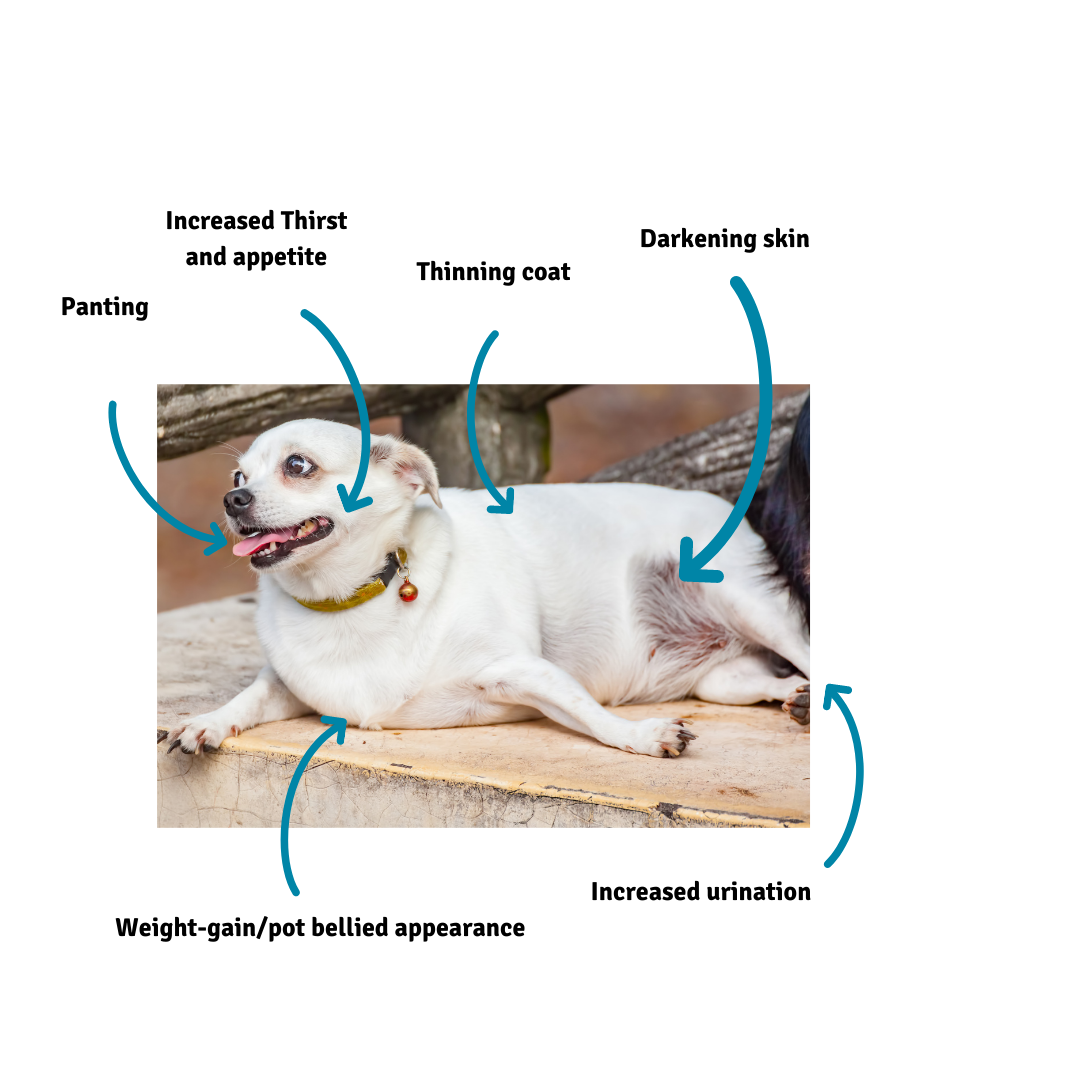So, your vet thinks your dog may have Cushing’s disease? (For information on how we test for Cushing’s disease, CLICK HERE.) But to you, your pet seems happy, a little overweight perhaps, and maybe drinking more than they used to, but generally ok. Is it really worth spending so much money on blood tests? Or an ultrasound? Is Cushing’s Disease really that bad? And what is it anyway?
So What is it?
Cushing’s disease is an excess of cortisol in the body. Cortisol is the hormone your body produces when stressed and it is made in the adrenal glands. The pituitary gland (which is in the brain) sends a signal (adrenocorticotrophic hormone, or ACTH) to the adrenal gland to produce more cortisol. Some times a tumour on the pituitary gland can cause it to send too much ACTH to the adrenal glands, so the adrenal glands make too much cortisol.
The adrenal glands live just near the kidneys in dogs and cats. On people they are triangle shaped organs on top of the kidneys, but in dogs and cats they are bean shaped, and beside the kidneys. Sometimes the tumour can be located on the adrenal gland itself. In both adrenal tumours, or pituitary tumours, we generally treat with a drug that prevents the adrenal gland from producing cortisol.

Physical Changes:
The first clue that your pet has Cushing’s disease usually appears in physical changes to your pet. Usually they gain more weight than they should. Often the weight is around their rump, and they develop a pot-bellied appearance. This is because cortisol alters the fat metabolism in the body. It can also cause muscle break-down and muscle weakness, so the belly hangs lower than usual. Additionally it can cause thin, brittle hair, or even complete hair loss.
Changes inside the body
Cushing’s disease is visible on the outside, but it is the inside changes that cause the most problems. Excessive cortisol in the body can suppress the immune system (making your pet more prone to infections). It can alter the fat metabolism and glucose balance (predisposing your pet to diabetes) and shorten your pet’s life expectancy. It can cause decreased bone mass. It also causes an increase in thirst, and therefore increase in the need to toilet. This can result in “accidents” and wake-ups in the middle of the night, when there used to be none.
Cushing’s disease can affect the drugs we can safely use in your pet to treat arthritis. And your pet is more likely to suffer from arthritis due to weight gain and muscle wastage.
Why should I treat Cushing’s Disease?
The short answer is that treating Cushing’s disease helps your pet live healthier and for longer. It can be hard because other than looking fat, panting and drinking more, the changes Cushing’s disease makes to the body are invisible to us. And the treatments can feel more costly than just ignoring the problem. But if your goal is to keep your pet as healthy, then treating Cushing’s is imperative.
The medication helps to prevent your pet from getting unnecessary skin infections, and urine infections. It helps prevent diabetes in your pet. It prevents your pet’s bone marrow being supressed, which keeps your pet’s immune system healthy and active.
The summary is, treating Cushing’s disease helps your pet live longer, and stay healthier. And for most of us, that is reason enough to treat Cushing’s disease. If you want to know more about how to test for Cushing’s disease, CLICK HERE

